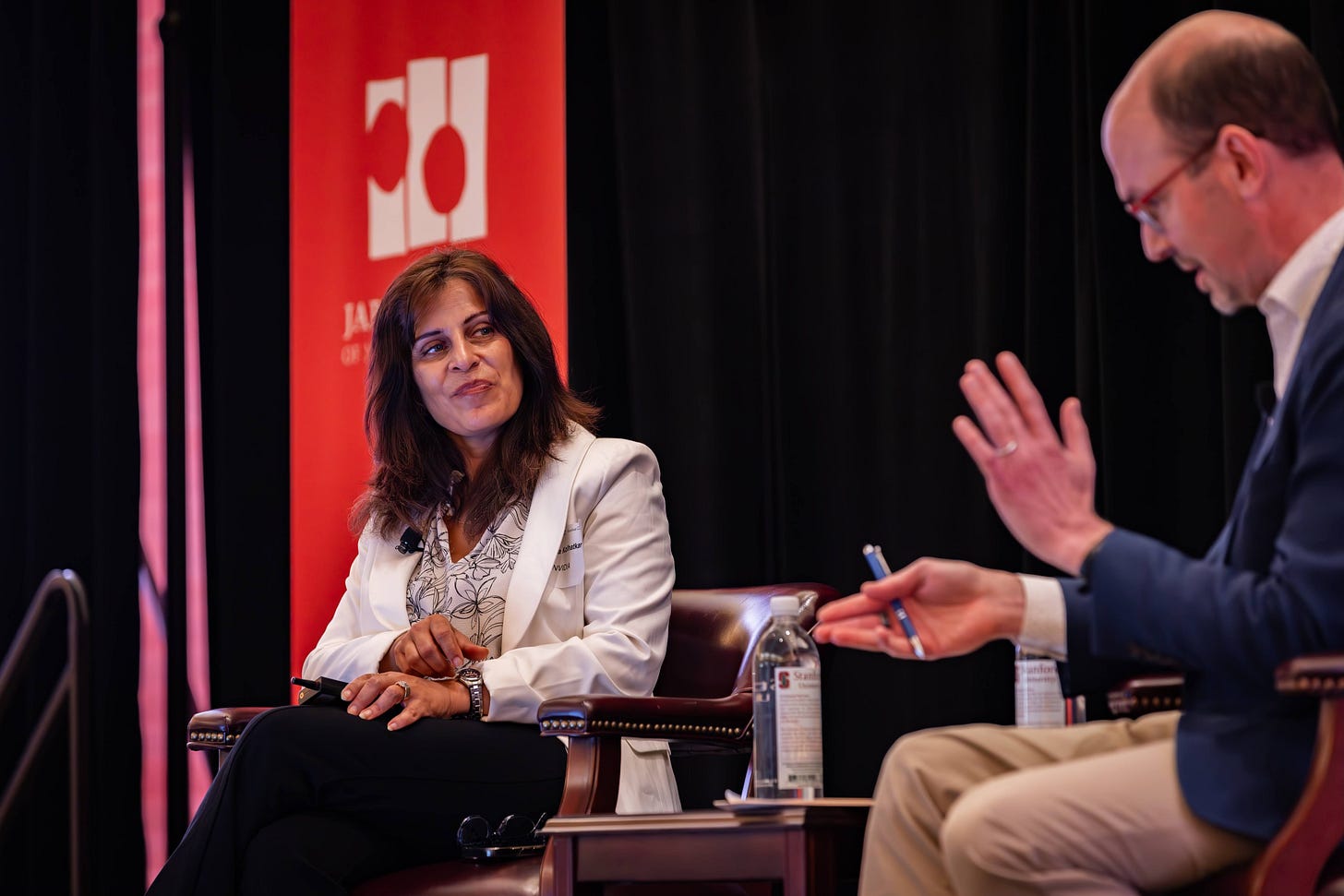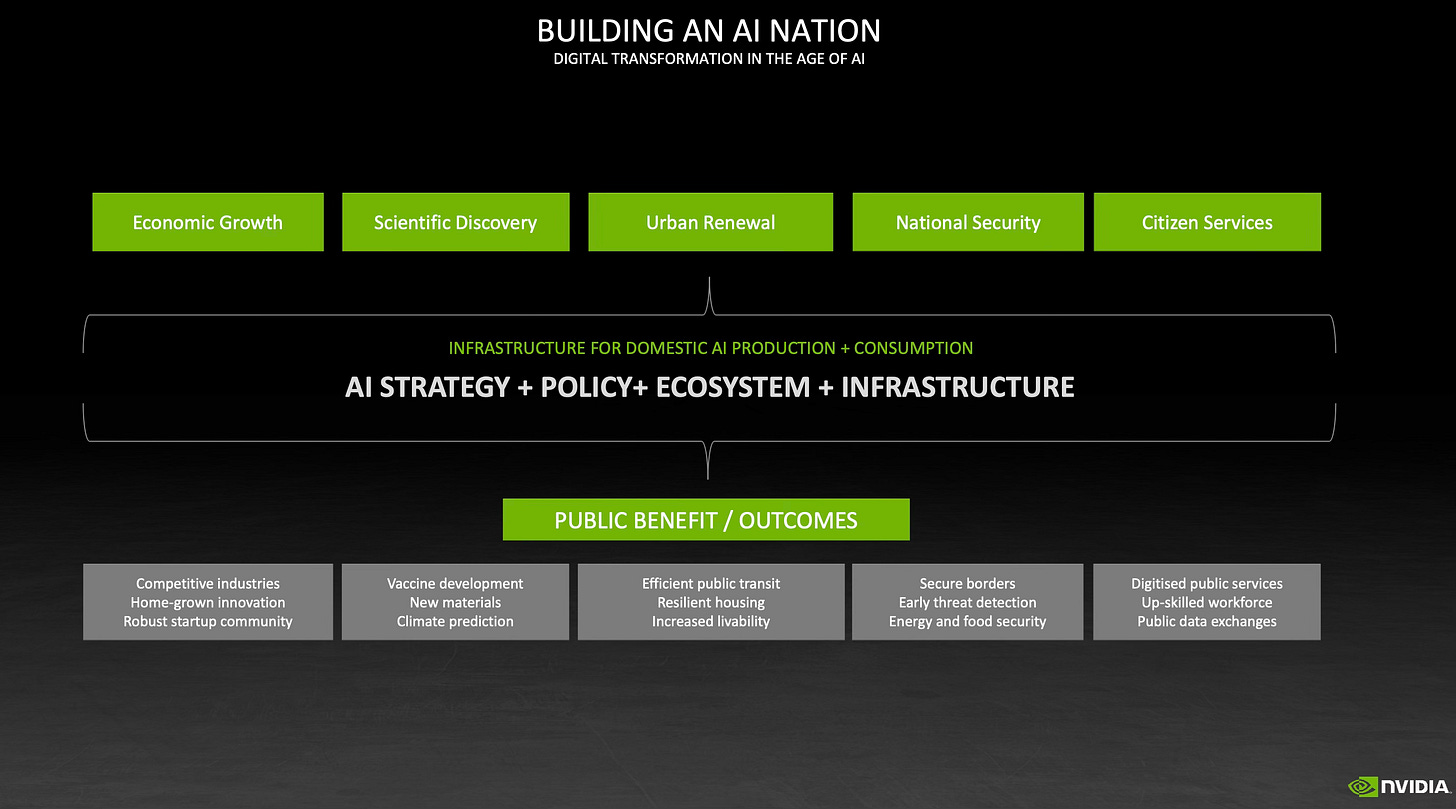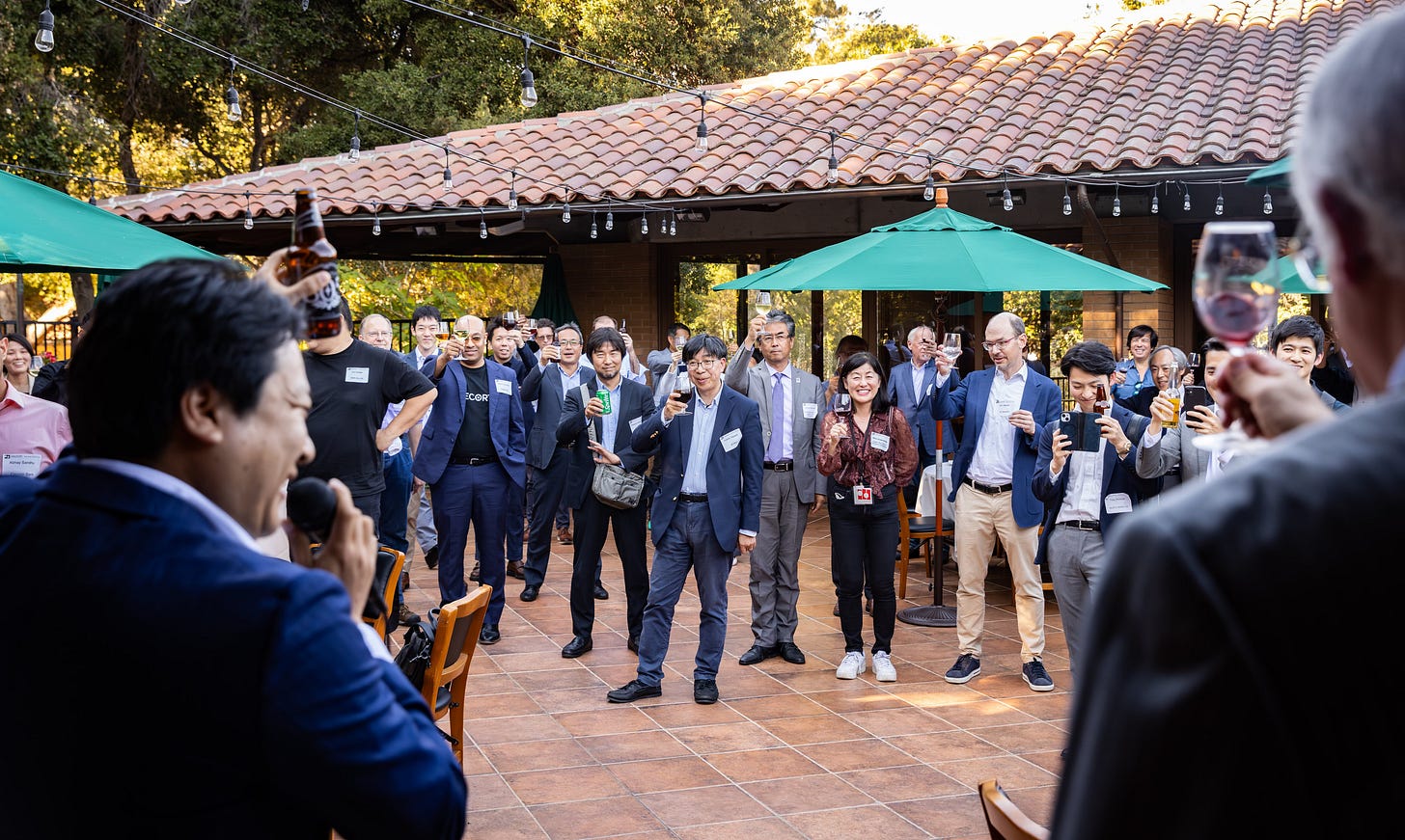Highlights from the 14th Japan-US Innovation Awards
Plus, keynote interview with Shilpa Kolhatkar, NVIDIA's Global Head of AI Nations
Friends - I’ve been out of your inboxes for a bit. (I have been on Substack Notes regularly, but realize only a minority of readers access this newsletter through the Substack app. Note to readers - the community aspects of Substack really are better on the app!)
Recent Notes do provide a trail of breadcrumbs on what I’ve been up to:
Annual R&D expenditures by telecom industry suppliers - this was an expected but still riveting find as part of a look at the state of current telecom industry suppliers, as part of an upcoming paper on Open RAN. Huawei’s R&D is bigger than Nokia and Ericsson’s combined. (And that’s with Nokia spending 20% of revenue on R&D.)
Summer entrepreneurship intensive. For the past few weeks, I’ve been hosting the JETRO U25 entrepreneurship intensive on campus, with a group of Lean Startup, Design Thinking, Leadership, and Marketing faculty. Our group from Japan ranges from age 18 (!) to 25. It’s been a delight spending time with an energetic group who will build Japan’s future.
Keynote interview with Shilpa Kolhatkar, Global Head of AI Nations, NVIDIA. NVIDIA-watchers will remember various quotes from CEO Jensen Huang and NVIDIA on the topic of sovereign AI. Shilpa Kolhatkar is responsible for developing the public sector for NVIDIA (much as she did in her past career at Cisco, when I was a consumer of her team’s research on the Internet of Everything). It was a delight to sit down with Shilpa for a keynote interview on July 18.
Item 3 brings us the subject of today’s post - the 14th Annual Japan-US Innovation Awards, held July 18, and co-produced by the US-Asia Technology Management Center at Stanford University, and the Japan Society of Northern California, a now-119-years-young non-profit. I have served on the JSNC board since 2015, and the Innovation Awards steering committee, shepherded by Dr Richard Dasher of Stanford, since 2017. It’s really been a delightful community to be a part of.
Each year the IA celebrates an Emerging Leader from Japan and from the United States, along with five Showcase Companies from Japan. The list of past Emerging Leaders is an illustrious group.
Past newsletters on the Innovation Awards are here.
2022, as we came out of the pandemic:
2023: featuring Figma, TreasureData, OpenAI and more
And, on to 2024! After many months of preparations, it was showtime. Among the supporters were some familiar faces - the team at JETRO San Francisco was out in force.
The Showcase companies are always a favorite, and really get to the origin story of the Awards - to help showcase new, innovative (and potentially overlooked) companies coming out of Japan. Past Showcase Companies include Preferred Networks, Spiber, and iSpace, this year’s Emerging Leader.
This year’s cohort of Showcase Companies - AI Medical Service; Citadel AI; EdgeCortix; Helical Fusion; and Synspective — was a particularly strong batch.
These were companies with ambitious goals, from fusion energy (Helical Fusion) to synthetic aperture radar (Synspective) to edge AI computation (EdgeCortix) to AI based diagnostics (AI Medical Services) to AI integrity (Citadel AI). (Rephrased, no one was trying to solve laundry.)
Here I want to give a shout-out to our advisory council, for their work in the nomination and selection process. I can’t wait for what’s next from this group of companies. I particularly enjoyed my conversation with Sakyasingha Dasgupta, CEO of EdgeCortix. Below is a photo of their booth at the event.
Our Emerging Leaders were Joby Aviation (US) and iSpace (Japan).
It was striking to see them present in succession, and there were some commonalities - both involve a lot of vertical integration, extending into service provision, and substantial capital and regulatory barriers to entry. Joby CPO Eric Allison highlighted that the company had conducted a 500-mile hydrogen-electric flight over a test site in Marina, California, a feat that I suspect was motivated by backers from Japan including Toyota.
On to our conversation with Shilpa Kolhatkar, Global Head of AI Nations at NVIDIA! After brief introductory remarks from Shilpa, I joined her on stage for a conversation on sovereign AI.
Shilpa Kolhatkar, Global Head of AI Nations, NVIDIA; Photo credit: Japan Society of Northern California
Some highlights from our conversation:
Some 60-70 countries have an AI strategy. Sovereign AI refers to AI by and for nations, using its own capabilities, such as languages and data sets. Thus, national datasets are a valuable input.
Here I will note many of the LLMs are western, even San Francisco area-emanated. It has been striking to see the simultaneous embrace and pushback on these, in a way that differs from the reaction twenty-plus years ago to Google Search (with the very notable exceptions of China and Russia). The concept of homegrown AI (for us, by us, as I commented at the event) is, understandably, attractive.
AI infrastructure is national infrastructure, much in the way that ports, dams and bridges function as transportation infrastructure.
Here, my mind went to examples of how airports and roads have proven to be either multiplicative for cluster growth, or a constraint. I am fresh from reading The Box, on the history of containerization, which led to port traffic redirecting to modern, containerized ports. (Bye-bye lower Manhattan, hello Newark.) We can measure airports through takeoffs and landings, and throughput. How to measure the impact of AI infrastructure?
Also, if sovereign AI is based on sovereign inputs, what if I am a country (let’s say Finland), with a less commonly used language, and perhaps less resources (capital, energy) to put into a sovereign AI model? Will we get regionality of models? Here, Shilpa highlights alliance activity among Nordic countries.
A Nikkei reporter did ask the anticipated question - if Japan is investing in sovereign AI, why is it buying from NVIDIA, and not using domestic chips?
This is a question that packs a lot, and it is noteworthy that SoftBank acquired GraphCore a week before event, in large part to stand up another option besides NVIDIA. (Two weeks after the event, Cerebras filed its S-1). Shilpa noted (as I would have) that the market for silicon is competitive.
I would add the opening NVIDIA has filled was left by Intel, and Intel itself is working hard on alternatives to NVIDIA (e.g. Gaudi; linking to
’s latest post on Intel’s earnings). Whether Intel or anyone else can re-create the software ecosystem that NVIDIA has created over decades is the longer answer to that question.What sort of applications will sovereign AI support?
Here, I will share a screen cap of Shilpa’s materials.
This is a diverse set of applications, from scientific research to civic services to public safety (my rephrasing of national security). Thus sovereign AI will likely mean something different with each deployment.
This is evocative of the smart city market, which ultimately meant different things to different cities, from exposing civic data sets, to energy efficiency (Austin, Fort Collins) to a civic OS (Barcelona) to public safety (New York). (For the same reason, the smart city market proved a challenging one for startups, who can’t get to scale with N=1 versions of each deployment and long bid cycles.)
But what about the energy consumption?
I would be negligent as moderator if I didn’t ask about energy consumption. Global energy demand from communications infrastructure (including cell towers to data centers) historically was around 2% of total electricity consumed, with about 1% coming from data centers. That has gone up, and is projected to go up further. Dramatically. And the energy-intense compute behind AI is one reason why. (As reference, a recently announced SoftBank data center in the Osaka area - site of a former Sharp factory - will pull a projected 150 MW.)
Shilpa highlighted iterative improvements with each NVIDIA product release (now yearly) in performance-per-watt terms, and also noted the potential for AI itself find efficiencies in network management.
So, on the topic of AI readiness, how is Japan doing?
Moderator’s note: Shilpa and I were sitting right in front of Osumi Yo, Consul-General for Japan in San Francisco when I asked this question, as I reminded her. No pressure!
Happily, it is an area where Shilpa could answer that Japan measures well, on a few dimensions: first, taking a regulatory-light (my words, not Shilpa’s) to AI as a whole, and also in terms of Japan-US collaboration, not only in business, but also between universities. Shilpa highlighted Japan-US university collaborations that were announced timed with the April Biden-Kishida summit, between Tsukuba University and the University of Washington, and between Keio University and Carnegie Mellon. NVIDIA and a variety of corporate supporters contributed to a $110M fund to facilitate this collaboration.
I would be remiss if I didn’t share who was missing from this year’s Innovation Awards - long-time JSNC board member John Thomas, who was instrumental in getting the Awards off the ground, and who passed late last year. Allen Miner, investor, event co-founder and steering committee member, and for whom the Sunbridge Emerging Leader Award is named, spoke very graciously about John’s impact and memory. John was simultaneously friend and role model and North Star, and on this day, we felt his absence.
Allen Miner, Sunbridge (right), and Richard Dasher, Stanford (left). Photo credit: Japan Society of Northern California
Post-event, we wrapped up with a session at the Stanford Faculty Club - here, Yuki Maruyama of MUFG Bank leads us in a toast, along with Richard Dasher of Stanford US-Asia Technology Management Center.
Kampai! Photo credit: Japan Society of Northern California
Onward and upward,
Jon
















